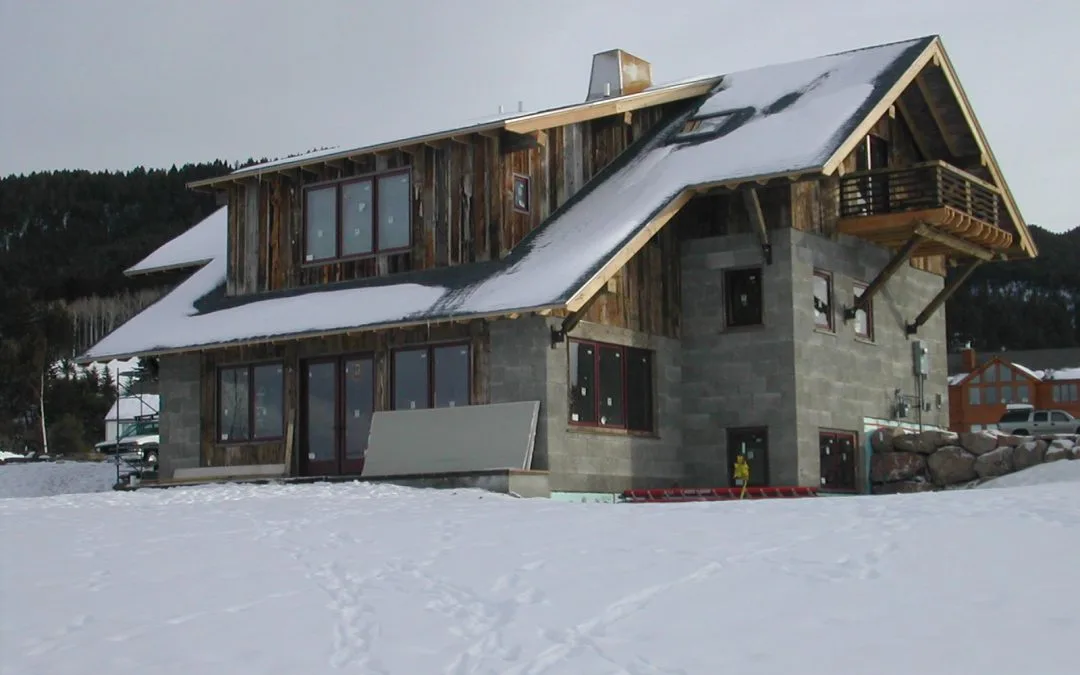Net-zero energy homes (homes that produce as much clean energy as they consume) are the future of construction. They offer all the benefits of enhanced energy efficiency, from reduced costs to increased comfort. In order to build a net-zero energy home, you need to reduce the home’s energy requirements.
This blog post is a feature of a net-zero home built Bozeman, Montana. It’s one thing to build a net-zero home in a warm sunny state like Florida, but it is a much stiffer challenge to build net-zero in the cold north and that’s where super-insulated Nexcem insulated concrete forms (ICFs) come into play!
WHY BUILD A NET-ZERO HOME?
Net-zero homes have been called the “future of homes” for a lot of reasons. First and foremost, they are highly energy efficient. According to the Canadian Home Builders’ Association, net-zero homes are up to 80% more energy efficient than standard homes.
Here are some of the benefits:
- From low utility bills all-year-round to protection against future increases in energy prices, net-zero energy homes are the economical choice over the long-term. You can also expect a 25% rebate on your mortgage insurance premium.
- High Level of Comfort. Temperatures remain the same throughout the home — there are no draughts. Temperatures also stay consistent during power failures as well.
This home, for instance, kept its temperature at 21 degrees without heat even though it was -10 degrees outside.
- Outside noise pollution such as traffic and lawnmowers is reduced due to the superior insulation power of net-zero homes.
- Environmentally-Responsible. Net-zero homes are more environmentally responsible, allowing you to protect against climate change and preserve natural resources.
WHY NET-ZERO ENERGY HOME BUILDERS CHOOSE ICFs
Why do net-zero energy home builders choose insulated concrete forms (and Nexcem ICF, in particular)?
If you want to achieve a net-zero home, the building envelope must be highly-efficient. ICFs offer a level of thermal performance that is considered to be “greater than the sum of its parts.” This is known as the “ICF effect.” Insulation is clearly important, however, the performance of a wall assembly is more critical than the insulation itself.
How do we know this, you ask?
Exterior walls made with ICFs require 44% less energy to heat and 33% less energy to cool when compared to wood-framed walls, even though both had a similar insulation value.
But what makes this possible?
- Continuous Insulation. Gaps between the insulation reduce the insulation value of a traditional wall. When it’s said that R-19 batt-insulation in framed walls has an R value of 19, this isn’t actually true. This is because the insulation is only effective between studs.
With Nexcem ICF blocks, the exterior Nexcem/Insulation layer a consistent thickness, which means that the stated R-value is accurate. Additionally, the Nexcem web/ties within the Nexcem walls don’t act as a thermal bridge. The Nexcem material has an insulation value of R-1.75 per inch, so through the web, the insulation value is actually higher than through the cavity with insulation insert.
- Air Tightness. Framed walls are hollow and allow for a lot of air leakage to occur (through sheathing joints, for example), making them a major cause of lost energy. Wood framed walls also shrink and crack over time, leading to even more leakage. Keep in mind that spray insulation does not ensure that all leaks have been addressed either.
With Nexcem however, continuous insulation with the majority of insulation on the exterior and proper exterior weather/air barriers make them airtight. Any potential leakage is also easily identifiable.
- Thermal Mass. Concrete provides a 5-day thermal lag, which, again, is not the case with wood-framed walls.
WRAPPING IT UP
Net-zero energy homes are the future of construction, and insulated concrete forms are a critical component of achieving this goal.
It’s the Nexcem brand, however, that is a leader in the market that provides high performance without styrofoam. With Nexcem ICF blocks offering more insulation power, not to mention reduced labour time and lower costs for a quick and easy build, the choice was an easy one for those looking to build an net-zero energy home.

